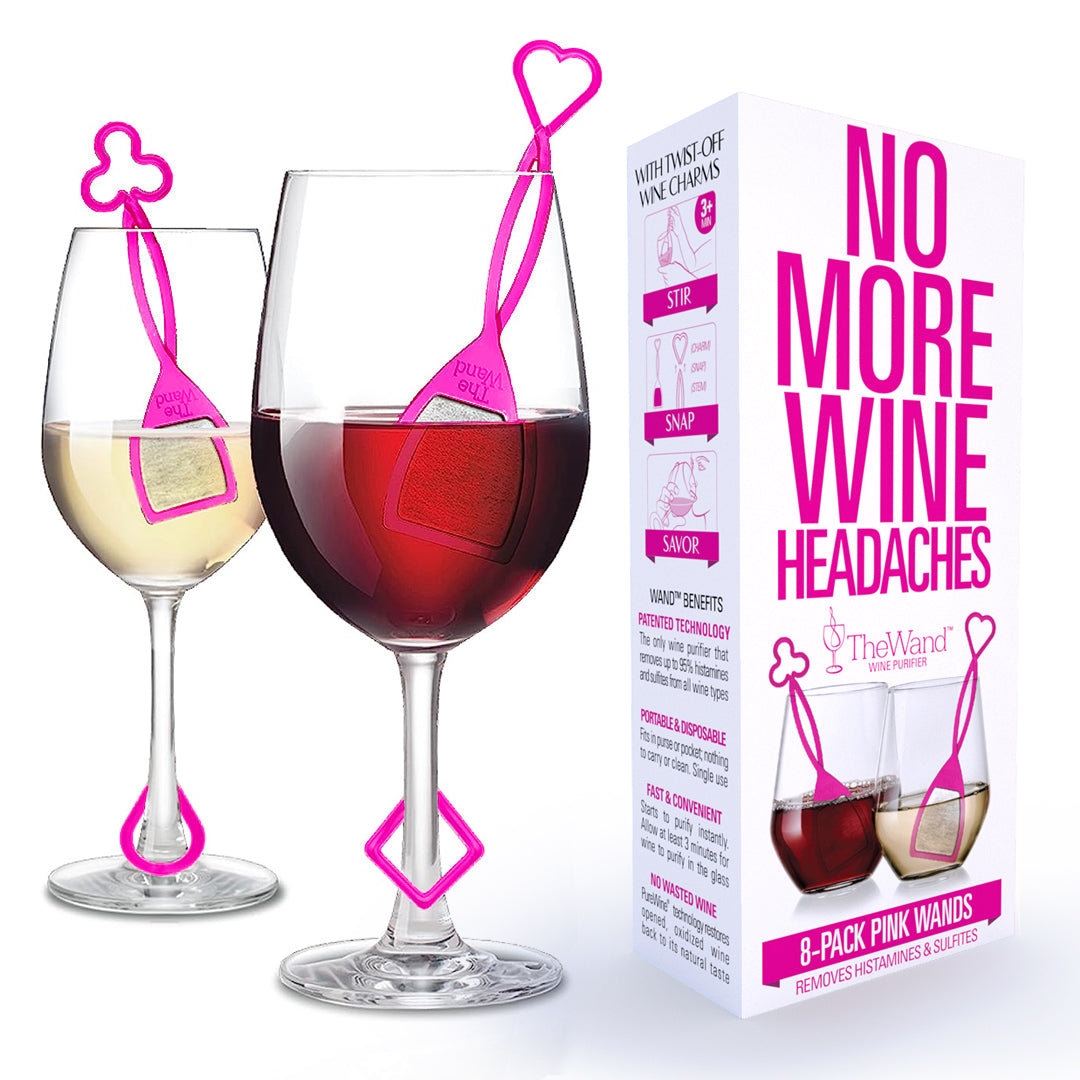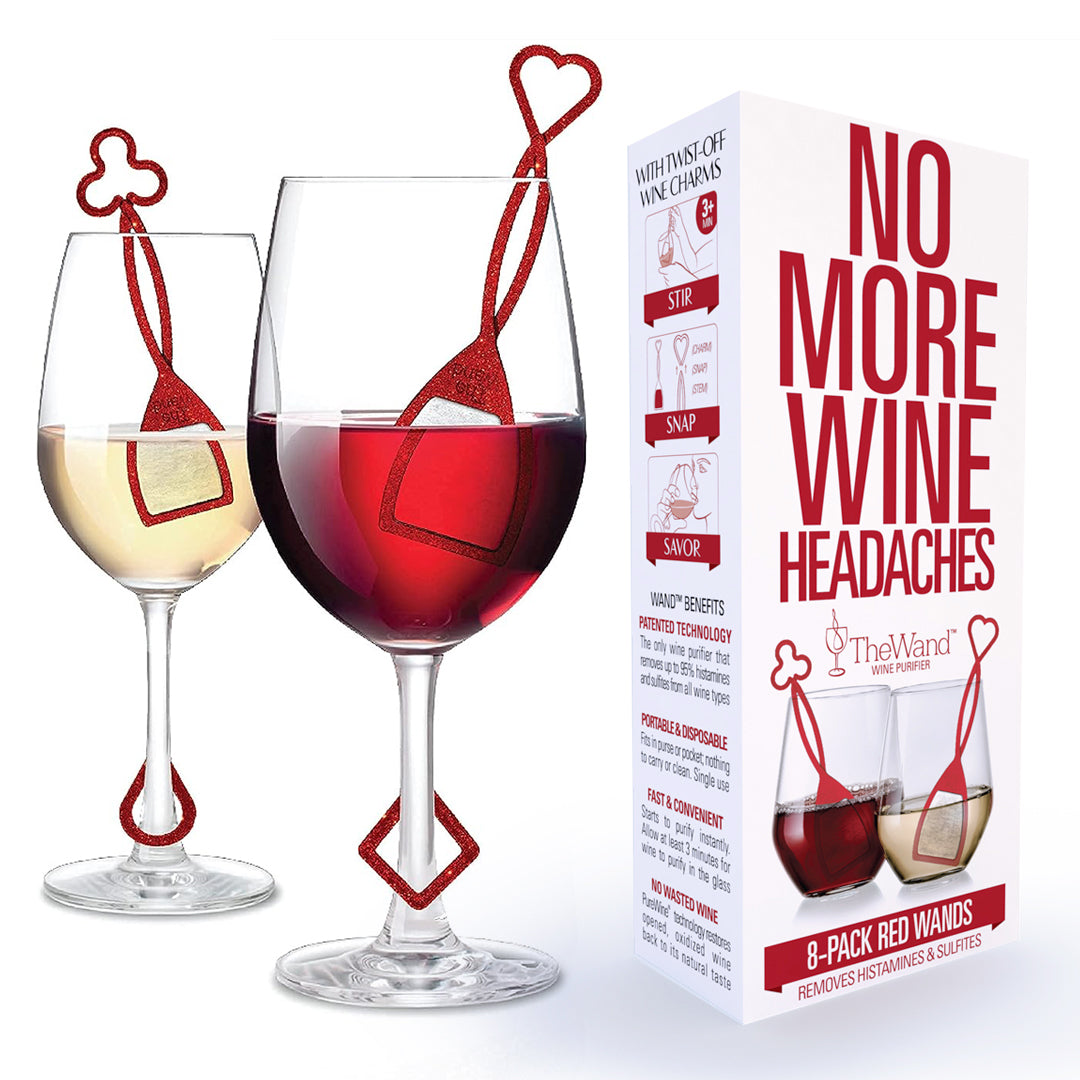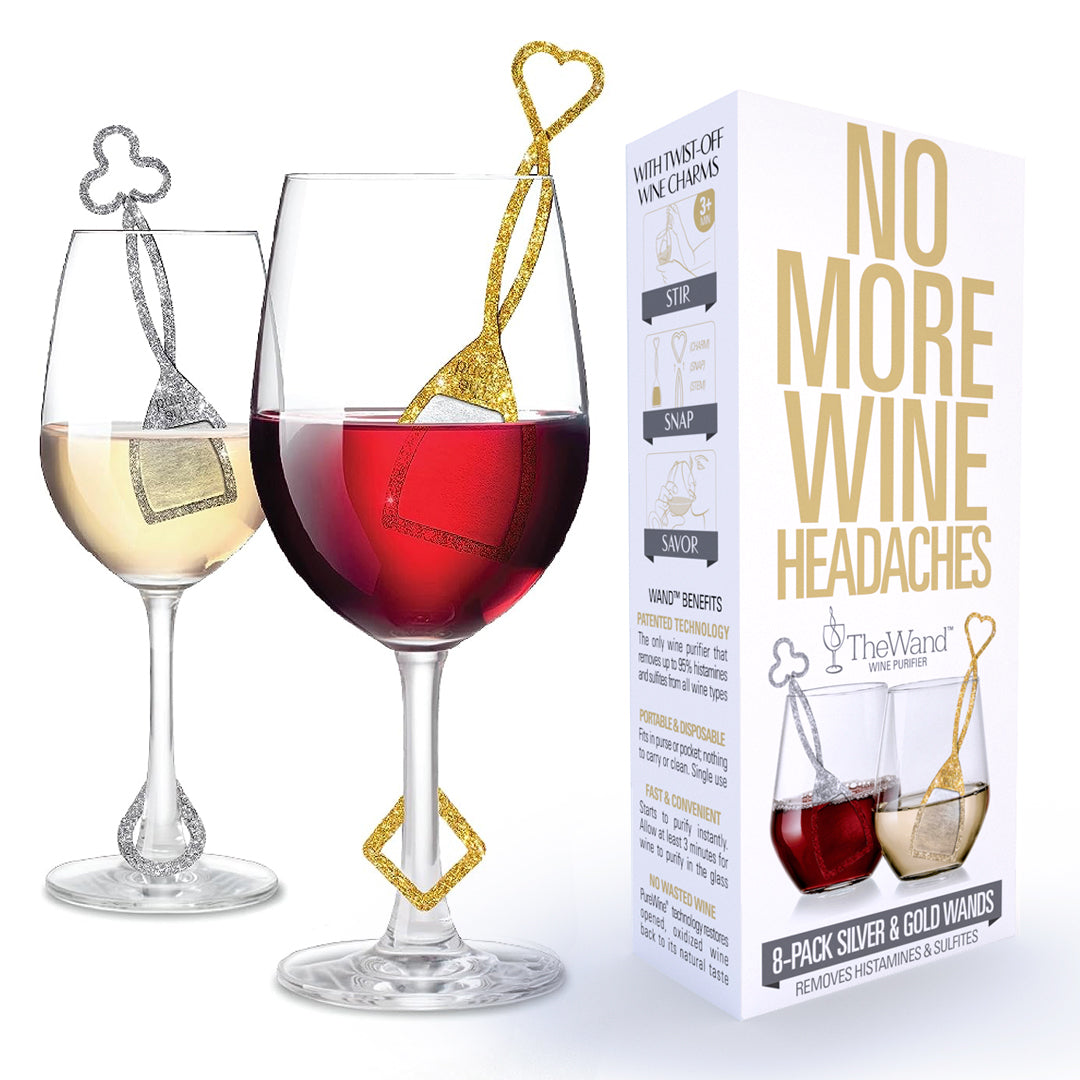The Benefits of Red Wine - Is Dry or Sweet Red Wine Better for You?
Red Wine has remained an essential part of society since the dawn of time. Along with the time-honored social and culinary aspects of wine, it is becoming more recognized and appreciated that both sweet and dry reds offer several health benefits. More studies immerge every day that highlight the benefits that red wine has on the body, mind and general well-being.
But what exactly are these health benefits, and does a dry red wine provide more benefits than a sweet red wine? If a person prefers the refreshing quality of sweet red wine, are they giving up a lot of the natural health benefits of red wine in return?
What is the Difference Between Dry Red Wine and Sweet Red Wine?
Throughout the production of dry and sweet red wine the most significant difference is the residual sugar (fructose) in the wine. Wines that have below 10g of residual sugar per 5 fl. oz serving are considered dry, while 11-35g of residual sugar is off-dry. Anything above 35g is classified as sweet. The main difference is the high levels of sugar – which also means that sweet red wines are higher in calories.
How Many Calories in Dry vs. Sweet Red Wine?
Typically a glass of sweet red wine has 175 calories as compared to 125 calories for a dry wine. Below is a typical label for a bottle of dry red wine.

When wine is produced, the residual sugar is progressively consumed by the yeast and converted into ethanol (aka, alcohol) over time. As the sugar content declines and the alcohol level increases, the wine transitions from a sweet taste to a dry taste. Dry wines typically have an ethanol content of about 13-16% ABV (Alcohol By Volume. With many sweet wines, however, the process is halted before all the sugar turns into alcohol, which results in a sweeter wine with lower alcohol levels in the 8-10% ABV range.
Another common way to produce sweet wines is to dry the grapes, either while they are still on the vines or after they have been picked. This essentially just removes any water, which allows for concentrated flavours and higher sugar content before the fermentation process is started.
Fortified Sweet Wine Process
Another method for producing a sweet wine is to “fortify” the wine. This is a process in which a spirit (often brandy) is added to the wine to stop the fermentation process and prevent all the sugar from being converted into alcohol.
No matter which method is used to create sweet red wines; the grapes used are often the very same grapes that are used to produce dry reds.
You may be wondering where your favorite wine fits into these categories? The convenient chart below, published by Wine Folly, provides a good summary of where various red wines fall along this continuum.
Factors that Influence of Red Wine Sweetness
While the actual sweetness levels in wine are what differentiates the dry from the sweet, there are other elements in the wine that might change the perception of sweetness in the wine.
Red Wine Acidity Levels
Acidity in red wine is more common in younger wines and certain varieties. With higher levels of acidity, the perception of sweetness is lessened – so the wine might be perceived as dryer than what the actual sugar content would indicate. Some red varieties, like Sangiovese and Gamay Noir, are naturally higher in acidity and therefor taste dry.
Red Wine Tannins
The tannins, which are found in the skins, seeds and stalks of red grapes, offer a drying sensation in your mouth known as astrigency. So naturally, wines with higher tannin levels will normally taste dryer. An excellent example of this is the comparison between Pinot Noir (which is low in tannin) and Cabernet Sauvignon (which is higher).
Red Wine Alcohol Content
Considering the fact that sugar is actually being converted into alcohol during fermentation, wines with higher alcohol levels will naturally be dryer. So, if the wine has higher alcohol, (14-16%), you can be sure that there is less sweetness.
Despite the increased sugar levels and calories in sweet red wines, there are several benefits that these wines have in common with their dry counterparts. The high sugar does not subtract from any of the health benefits that the red-grape compounds have on the body – and so can offer a range of advantages. These sweet wines, however, should still be consumed in moderation, as with all other alcoholic beverages.
Red Wine Health Benefits
It’s Rich in Antioxidants
Red wine, whether it is dry or sweet, has high levels of antioxidants and polyphenols that are great for your health. The polyphenol and antioxidant components have been found to have a wide range of physiological effects. It’s been found that the darker the grapes, the higher the levels of antioxidants.
Red Wine With the Most Antioxidants
Red Wine Helps with Colds and Flu
One of the benefits of these high antioxidants is its ability to treat common colds and flu. These antioxidants, along with other compounds found in red wine, helps you recover quicker from the symptoms.
It Regulates Your Blood Sugar Levels
Despite the sugar content, sweet red wine is excellent for controlling your blood sugar levels. A specific compound that is found in the skins of grape skins was found to regulate blood sugar levels, as well as cholesterol. In research done on the effect of wine on blood sugar levels, it was found that drinking wine with a meal lowers your blood sugar level by roughly 30%.
Keep in mind, however, that this should be done with extra care; especially with individuals with diabetes.
Aids Your Digestive System
With the entire process that wine undergoes, including the fermentation, there is plenty of live bacteria present in wine. This bacterium can help promote a healthy gut as they work alongside the high levels of healthy polyphenols found in red wine.
There was a large study done on the connection between gut-health and wine. Over 3000 people were monitored, and it was found that the polyphenols in wine were incredibly beneficial. This study reported these benefits were seen with individuals who drank one glass a night.
Red Wine is Good for Heart Health
The polyphenols found in red wine – both sweet and dry – help prevent unwanted clotting in the arteries. There is also a type of protein found in wine that protects the heart from inflammation. It should be mentioned that this only occurs with small amounts of red wine, whereas greater amounts of alcohol put a lot of strain on your heart.
Red Wine Helps the Fight Against Cancer
Within the polyphenol class of compounds, resveratrol has been found to destroy individual cancerous cells within the body.
In other studies, it was found that the compounds found in red wine also aided some forms of chemotherapy by making the cancerous cells more sensitive to the treatment.
Red Wine Improves Bone Strength
Resveratrol has proven anti-inflammatory properties that not only prevents bone loss, but also increase bone density. In fact, in a study on this topic, the results suggest that polyphenols and resveratrol encourage the formation and development of bone mass.
Red Wine Improves Sleep
Red wine, whether sweet or dry, has relatively high levels of melatonin that is an essential natural hormone for regulating sleep patterns. It was found that the melatonin in red wine helps people to fall asleep more quickly and also achieve a better night of sleep.
Red Wine Prevents Acne
The resveratrol in red wines has proven to slow down bacterial growth in the body – especially on the skin. A study found that when resveratrol was consumed in conjunction with a benzoyl peroxide skin-treatment, the acne-prevention was enhanced dramatically.
Red Wine Improves Longevity
With the resveratrol and antioxidants in wine, there are several ways that sweet red wine can promote longevity. While the compounds not only decrease stress (which has significant health-implications), it also protects the body from several effects that ageing has on the body. That research found a substantial increase in lifespan when red wine was consumed in moderation.
It Improves Brain Health
For individuals always seeking out specific aromas and flavors in a wine, they will be happy to know that this dramatically improves brain health. The Yale School of Medicine found that constantly seeking aromas and flavors stimulates the brain by creating specific aromas and flavor connections in the brain. It is one of the most significant activities you can put your mind through. Sweet wine is especially fragrant, offering a range of unique aromas and flavors.
It Reduces Eye Cataracts
The antioxidants and resveratrol compounds in wine are transported by the blood to all parts of the body – including your eyes. It’s been found that the high levels of these two compounds have proven to help prevent blindness by retarding the growth of unwanted blood vessels in the eyes that cause a decline of eye-sight.
Red Wine Can Possibly Prevent Alzheimer’s
A significant factor contributing to the development of Alzheimer’s Disease is less blood entering the brain. Some early studies suggest that resveratrol compounds can heal the blood vessels that carry blood to the brain, which will in turn slow down the development of cognitive diseases like Alzheimer’s.
Examples of Dry Red Wines
There is a vast range of red wines found in all major wine-producing countries. This can range from Italian wines like Nebbiolo, Barbera and French reds like Bordeaux-blends. These intense red wines contain all the compounds that offer health benefits.
Examples of Sweet Red Wines
Apart from the well-known ports, sherries and dessert-wines mentioned previously, other sweet red wines are produced around the world. Look out for sweet wines from Italy, like Corvina and Amarone, or even late-harvest Zinfandels from California. Black Muscat is another popular variety used to make dessert wines across the globe.
The great thing about these sweet wines is they offer all the incredible health-benefits of the red-grape compounds. Along with being terrifically sweet and delicious. This works perfectly for individuals who are looking for all the good things found in red wine, but just don’t enjoy the taste of the dry wines.
Most Healthy Red Wine to Drink.
It is interesting to note that not all red wines are created equal. While dry wines are generally better for you than sweet wines, certain varieties also provide more significant benefits.
A great example is red wines that are high in tannins vs those that have lower levels of tannins. Higher levels of healthy tannin compounds are found in the darker skinned grapes. Heavier red wine varieties, for instance, like Cabernet Sauvignon have more tannins than lighter wines, like Pinot Noir.
While older wines have a strong association with better quality wines, the real health benefits definitely reside within the younger wines. While the wines are young and vibrant, all the health-promoting compounds are still available in the wine. However, they will significantly decline as the wine ages.
Red Wine Health Risks
Although drinking sweet and dry red wines is always pleasurable, there are some necessary considerations to always keep in mind as potential downsides.
Red Wine - Pregnancy and Breastfeeding.
Despite red wines having such a range of benefits, alcohol (ethanol) consumption is strongly discouraged during pregnancy or breastfeeding. Regular drinking during pregnancy can cause birth defects while breastfeeding babies can hinder healthy development in the child.
It can worsen chronic illnesses.
Several studies show that excessive wine drinking can trigger and worsen conditions like gout, asthma, insomnia and pancreatitis.
Red Wine Thins Your Blood
While blood thinning isn’t a problem for most people, this can be problematic for those who are on blood-thinning medication while consuming wine. The compounds in wine can interfere with the normal blood clotting processes. They can cause excessive bleeding while on blood thinning medications.
Red Wine Causes Headaches
Red wine is well recognized as one of the leading triggers for migraines.
The most significant causes of headaches, along with nausea and flushing, are the histamines (biogenic amines, i.e., tyramine, putrescine, cadaverine and histamine). These are formed naturally in the wine during fermentation. These often occur at high levels in the full-bodied red wines. These have been associated with mild to severe cases of headaches, skin flush, stuffy nose and GI upset.
Fortunately there is an effective and convenient method for removing the histamines and sulfites from all sweet and dry wines using the Pure Wine Wand, It can be easily ordered online and will change the way you experience wine forever.
There is a lot of information to consider about the benefits of both sweet and dry red wines. While the sweet wines are not necessarily better for your health than dry wines, they do offer their own set of health benefits and distinct enjoyment pleasures.

 (20 reviews)
(20 reviews)














